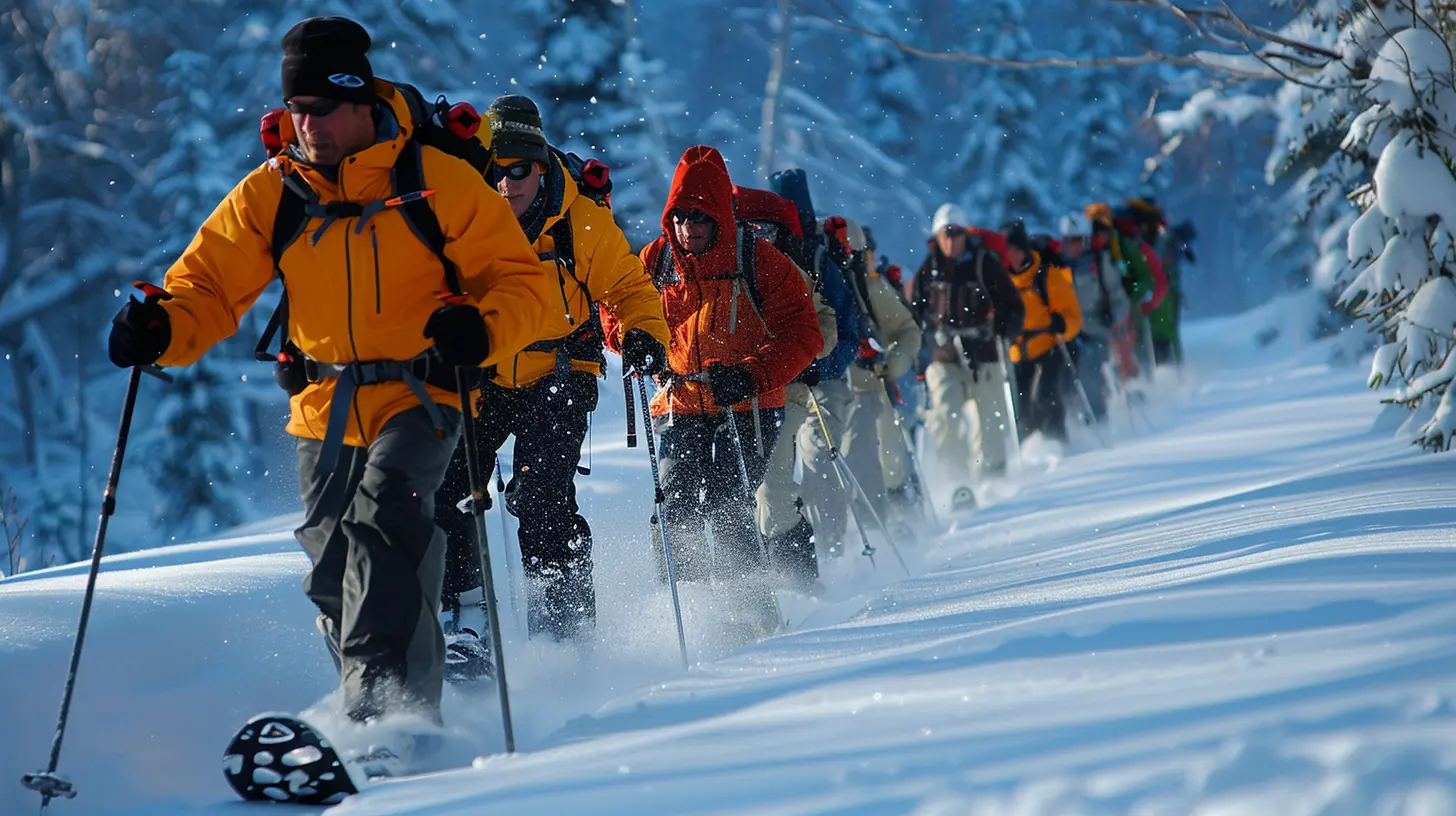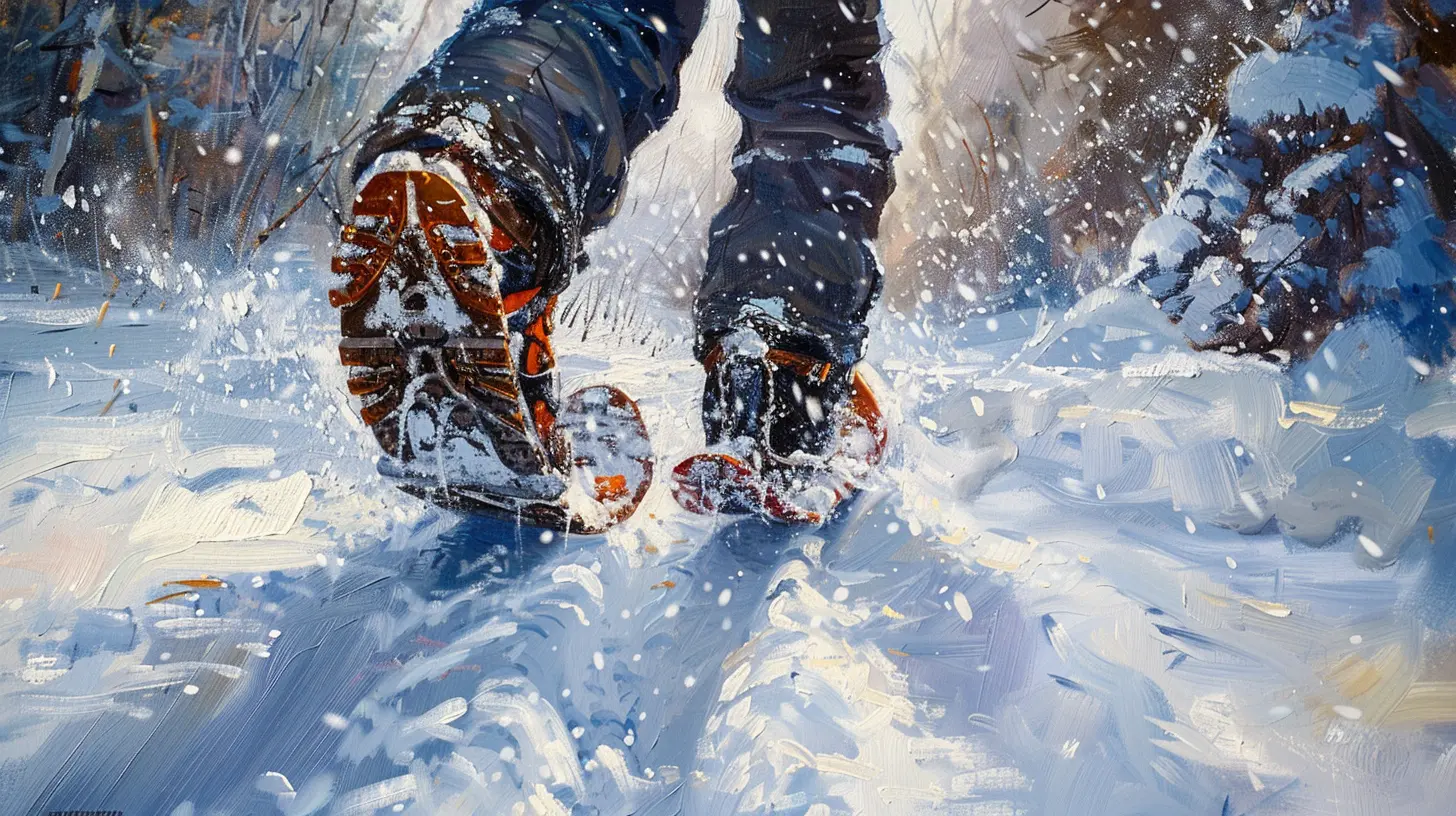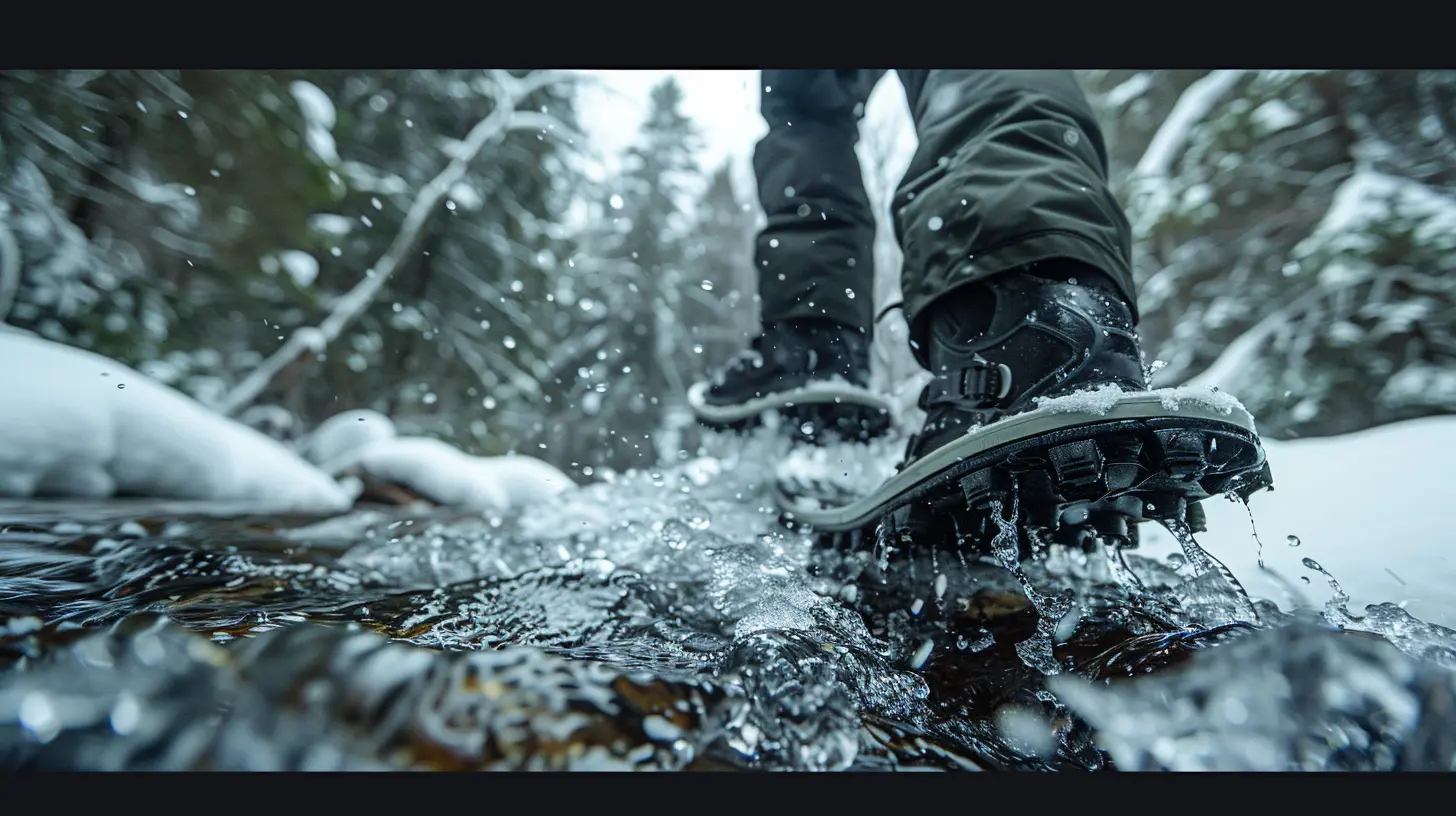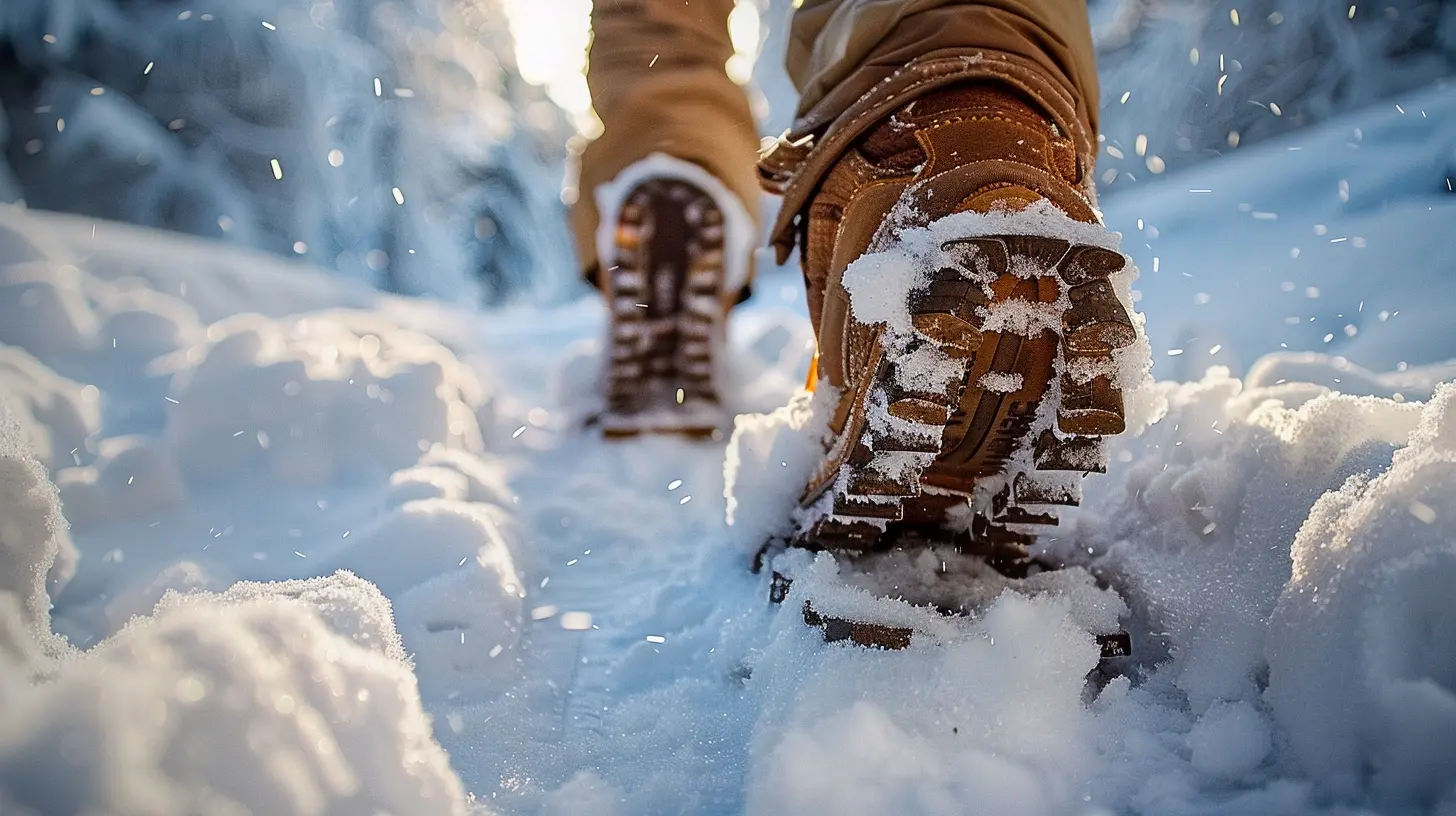Snowshoeing: An Intense Way to Explore Winter Wilderness
2 May 2025
Winter transforms the great outdoors into a wonderland of glistening snow, crisp air, and breathtaking landscapes. While many people huddle indoors, sipping hot cocoa, others embrace the season with an exhilarating activity—snowshoeing. If you're looking for an intense yet invigorating way to navigate the winter wilderness, snowshoeing offers the perfect blend of adventure, fitness, and connection with nature.
But what makes snowshoeing such a fantastic winter sport? How does it compare to other winter activities? And most importantly, how can you get started? Let’s dive into everything you need to know about this thrilling outdoor experience. 
What Is Snowshoeing?
Snowshoeing is the art of walking or hiking over snow-covered terrain using specially designed footwear called snowshoes. These wide-framed shoes help distribute your weight evenly, preventing you from sinking into deep snow. Think of them as a winter version of off-road tires—they provide the grip and stability you need to trek through fluffy powder with ease.While snowshoeing has been around for thousands of years—used by indigenous people and early explorers for survival—today, it's a recreational sport that appeals to adventurers, fitness enthusiasts, and nature lovers alike. 
Why Snowshoeing Is an Intense Yet Rewarding Workout
Snowshoeing isn’t just a stroll through the woods—it’s a full-body workout. In fact, many fitness experts claim that snowshoeing burns even more calories than walking or running on dry ground. Here's why:1. Engages Multiple Muscle Groups
Every snowshoeing trek turns your legs, glutes, and core into powerhouses as they push through the resistance of deep snow. Add in the arm movements from using trekking poles, and you’ve got a workout that rivals the toughest gym session.2. Cardiovascular Benefits
Snowshoeing increases your heart rate, making it an incredible cardiovascular workout. Whether you're climbing hills or moving through uneven terrain, your body is constantly adapting and working harder than it would on a treadmill.3. Calorie Burning Machine
Did you know that snowshoeing can burn between 400 to 1,000 calories per hour? That’s more than walking, hiking, and even some forms of skiing! The cold weather keeps your metabolism firing, and the extra weight of snowshoes adds resistance to every step.4. Low-Impact Yet Highly Effective
Unlike running, which can be tough on your joints, snowshoeing provides a low-impact alternative without sacrificing intensity. The snow cushions every step, making it easier on the knees and hips—perfect for people recovering from injuries or looking for a long-term sustainable fitness activity.
The Ultimate Way to Connect with Nature
Snowshoeing isn’t just about the physical workout—it’s also a mental and emotional experience.1. Silence of the Wilderness
Unlike noisy ski resorts, snowshoeing takes you deep into the tranquility of nature. The only sounds you’ll hear are the crunch of snow under your boots and the occasional rustle of wildlife. It’s like stepping into a winter fairytale.2. Unmatched Scenery
Snow-covered forests, frozen waterfalls, and mountain peaks dusted with white—it’s hard to find a sport that brings you closer to such a pristine, untouched environment. If you're passionate about photography, snowshoeing offers some of the most breathtaking landscapes for capturing winter magic.3. Mindfulness and Stress Relief
Being in nature has been scientifically proven to reduce stress and improve mental clarity. The rhythmic movements, fresh air, and scenic surroundings make snowshoeing a perfect escape from the hustle and bustle of modern life.
Getting Started: What You Need for Snowshoeing
The best part? Snowshoeing doesn’t require an expensive lift pass or high-end gear. Here’s what you’ll need:1. Snowshoes
There are three main types of snowshoes:- Recreational Snowshoes: Ideal for beginners on flat, packed trails.
- Backcountry Snowshoes: Designed for deep powder and challenging terrains.
- Running Snowshoes: Lightweight and built for speed on groomed trails.
Choose the right type based on where you plan to trek.
2. Trekking Poles
Poles provide balance, especially on uneven ground. Adjustable poles work best so you can customize them to the terrain and your height.3. Layered Clothing
Dressing appropriately is key to enjoying snowshoeing. Use the layering system:- Base Layer: Moisture-wicking thermal wear to keep sweat off your skin.
- Insulating Layer: Fleece or down to trap warmth.
- Outer Layer: Waterproof and windproof jacket to protect against the elements.
4. Waterproof Boots
Regular hiking boots can work, but insulated, waterproof boots will keep your feet warm and dry.5. Gaiters
These help prevent snow from getting into your boots—highly recommended for deeper snow conditions.6. Backpack with Essentials
Pack the basics: water, snacks, an extra layer, a first-aid kit, and a headlamp if you're venturing out late in the day.Best Snowshoeing Destinations in the World
Not sure where to go? Here are some of the best places to experience snowshoeing:1. Yellowstone National Park (USA)
Witness geysers erupting in a snowy landscape while spotting bison, moose, and wolves in their natural habitat.2. Mont-Tremblant (Canada)
This Canadian paradise offers snow-covered forests and stunning mountain views, perfect for a serene yet challenging trek.3. Dolomites (Italy)
Combine snowshoeing with jaw-dropping alpine scenery in one of Europe’s most iconic mountain ranges.4. Hokkaido (Japan)
Japan’s northernmost island is a snow lover’s dream, with deep powder, snow-covered forests, and abundant wildlife.5. Tromsø (Norway)
If you want to pair snowshoeing with a glimpse of the Northern Lights, Tromsø is the place to go.Snowshoeing vs. Other Winter Sports
Wondering how snowshoeing stacks up against other winter activities?| Activity | Difficulty Level | Equipment Cost | Calories Burned Per Hour | Scenic Experience |
|------------------|-----------------|----------------|----------------------|-----------------|
| Snowshoeing | Moderate | Low | 400-1,000 | ⭐⭐⭐⭐⭐ |
| Skiing | Hard | High | 500-800 | ⭐⭐⭐⭐ |
| Snowboarding | Hard | High | 300-600 | ⭐⭐⭐ |
| Ice Skating | Moderate | Medium | 300-700 | ⭐⭐ |
| Cross-Country Skiing | High | Medium | 500-1,100 | ⭐⭐⭐⭐⭐ |
Snowshoeing stands out as one of the most accessible, cost-effective, and rewarding winter sports.
Final Thoughts
If you’re looking for a way to stay active, explore breathtaking landscapes, and embrace winter, snowshoeing is your answer. It’s more than just a sport—it’s an experience that connects you with nature and challenges your physical endurance in the best way possible.Whether you're a beginner eager to step into the snowy wilderness or an experienced trekker looking for your next adventure, snowshoeing offers the perfect mix of intensity and serenity. So, grab a pair of snowshoes, bundle up, and hit the trails—you won’t regret it!
all images in this post were generated using AI tools
Category:
Extreme SportsAuthor:

Onyx Frye
Discussion
rate this article
6 comments
Scarlett McCracken
Nature's rhythm unfolds; solitude deepens understanding.
May 8, 2025 at 8:13 PM

Onyx Frye
Thank you! Embracing solitude in nature truly enhances our connection to the winter landscape.
Mandy Huffman
Snowshoeing beautifully merges adventure and tranquility in winter's embrace.
May 7, 2025 at 12:25 PM

Onyx Frye
Thank you! Snowshoeing truly captures the essence of winter, balancing excitement and serenity in nature.
Wolf McIlroy
Great article on snowshoeing! It truly is an exhilarating way to connect with nature in winter. I'd love to see tips for beginners and best trails to explore!
May 6, 2025 at 11:49 AM

Onyx Frye
Thank you! I appreciate your feedback! I'll definitely consider adding beginner tips and top trails in future updates. Happy snowshoeing!
Indie Barron
In winter's hush, beneath a silver sky, Snowshoeing whispers tales of wild, white dreams. With every crunch, our spirits soar high, Nature's embrace, a dance through frosty gleams, Adventure awaits in winter's serene seams.
May 5, 2025 at 12:36 PM

Onyx Frye
Thank you! I'm glad you enjoyed the imagery of snowshoeing as a means to connect with the tranquil beauty of winter wilderness.
Colt Warner
Snowshoeing offers a unique adventure through winter’s beauty, allowing us to connect with nature and find peace in the quiet of the snowy wilderness. Embrace the journey and enjoy every moment!
May 4, 2025 at 8:01 PM

Onyx Frye
Thank you! Snowshoeing truly captures the essence of winter's beauty and provides a serene way to connect with nature. Embracing each moment enhances the adventure!
Zorina Tucker
Snowshoeing offers a unique blend of fitness and adventure, allowing enthusiasts to traverse winter landscapes while connecting deeply with nature. It’s a transformative seasonal experience.
May 3, 2025 at 10:26 AM

Onyx Frye
Thank you for your insightful comment! I completely agree—snowshoeing truly does provide an unforgettable way to experience the beauty of winter while staying active.




